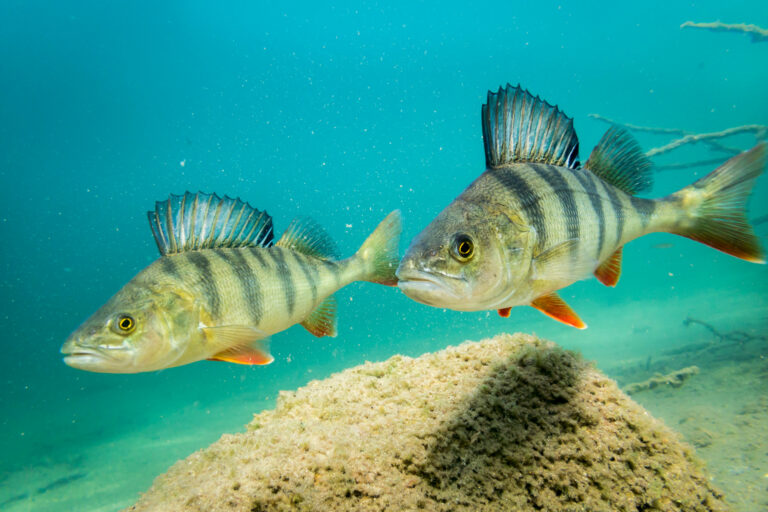Perca fluviatilis

Perca fluviatilis can reach a body length of 15 to 45 cm. The back of the perch is greenish in color with dark crossbands, while the sides become lighter green and the belly is grayish-white. There is a black spot at the rear of the first dorsal fin, and the pectoral and pelvic fins are often yellowish to reddish in color (Schaefer 2018). The body coloration can vary. Female perch attach their eggs in the form of a ribbon to underwater structures to protect them from sinking (Eckmann and Schleuter-Hofmann 2013).
Diet: Perch primarily feed on other organisms, with their diet consisting of zoobenthos, other fish, and zooplankton. The specific food items consumed are influenced by food availability and the size or age of the perch (Eckmann and Schleuter-Hofmann 2013).
Conservation Status: According to the IUCN Red List of Threatened Species and the Red List of Germany, Perca fluviatilis is classified as “Least Concern” and is not considered to be threatened.
-
Eckmann, R & Schleuter-Hofmann, D (2013)Der Flussbarsch : Perca fluviatilis. Biologie, Ökologie und fischereiliche Nutzung. 1. Aufl.: Hohenwarsleben : Westarp-Wiss
-
Schaefer, M (2018)Brohmer – Fauna von Deutschland. Ein Bestimmungsbuch unserer heimischen Tierwelt: Quelle & Meyer Verlag GmbH & Co.